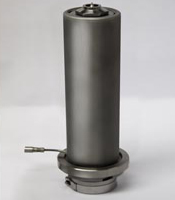 |
 |
In this Edition January 2012 |
LEAD FEATURE |
COMPANY NEWS |
MATERIALS NEWS |
MACHINERY NEWS |
EXHIBITION NEWS |
INJECTION MOULDING ASIA |
RUBBER JOURNAL ASIA |
PRA January-February 2012 Electronic Issue Now Available |
![]() Injection Moulding Asia
Injection Moulding Asia
New bushings for prototyping
 |
The standardised bushings enable mould makers to exactly simulate multi-drop systems using the same basic components - but without requiring special heaters, tips, retainers or needles.
The company says that slip-on, cast-in heaters give moulders better control of the heat in the nozzle body so they can reduce stringing. Plus, they also last about 50% longer than square coils when used in the nozzle body.
The D-Max bushings have two zones of heat: a slip-on, cast-in heater on the nozzle body and a square coil heater on the head area of the nozzle. The square coil heater uses a separate thermocouple and gives the user an accurate temperature reading to eliminate the heat soak time normally needed.
Mould makers can either control the heaters separately or run them together as one zone. The design of the heating mechanisms enables the bushing to handle a wider range of materials, including a broader range of crystalline polymers.
Hot sprue bushings have distinct advantages over cold sprues. Because of the length of set up time, cold sprues can have very high cycle times, based on the diameter of the sprue. Hot sprues enable the mould to open as soon as the part sets up and, as a result, produce much shorter cycle times. Since hot sprues have no cold runner, they also produce much less material waste.


